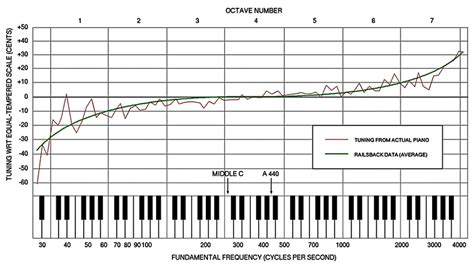The Surprising Truth About Piano Tuning Frequency
For centuries, the piano has captivated audiences with its rich tones and expressive capabilities. But have you ever considered the intricate science behind its sound? At the heart of a piano's beautiful music lies its tuning frequency, a subject shrouded in more mystery than you might think. This article delves into the surprising truths about piano tuning frequency, exploring the historical context, the modern standard, and the subtle variations that contribute to a piano's unique character.
What is the Standard Tuning Frequency for a Piano?
The most common answer you'll find is A4 = 440 Hz. This means the A above middle C vibrates at 440 cycles per second. This frequency serves as the anchor point for tuning the entire piano, with all other notes derived from this reference point using a specific mathematical system (typically equal temperament). However, this seemingly simple answer belies a more complex reality.
Why is A4 = 440 Hz the Standard?
The adoption of A4 = 440 Hz as the international standard is a relatively recent development, solidified in the mid-20th century. Before that, tuning frequencies varied considerably across regions and even orchestras. Some advocated for higher frequencies, believing they produced a brighter, more vibrant sound, while others preferred lower frequencies for a richer, warmer tone. The standardization aimed to achieve greater consistency and facilitate collaboration between musicians.
Has Piano Tuning Frequency Always Been 440 Hz?
No, absolutely not! Throughout history, the standard pitch has fluctuated significantly. In the 18th century, for example, A4 could range from 415 Hz to 422 Hz. These variations reflect the evolution of musical styles and instrument construction. The rise of A4 = 440 Hz is a relatively modern phenomenon.
What are the Differences Between Tuning Frequencies?
The differences between tuning frequencies, even small ones, are perceptible to trained ears. A higher tuning frequency (e.g., A4 = 442 Hz or 443 Hz) will generally produce a brighter, more "modern" sound. Conversely, a lower tuning frequency (e.g., A4 = 438 Hz or 440 Hz) will result in a warmer, richer, and potentially more "vintage" tone. These differences aren't just about personal preference; they impact the overall timbre and resonance of the instrument.
Can I Tune My Piano to a Different Frequency?
Yes, absolutely. While A4 = 440 Hz is the standard, a skilled piano technician can tune your piano to a different frequency if desired. This might be beneficial if you frequently play with an orchestra that uses a different tuning standard or if you prefer a particular tonal quality. However, it's crucial to work with an experienced technician who understands the implications of altering the tuning frequency. Consistent, accurate tuning regardless of the pitch is crucial for the piano's integrity.
How Does Temperature Affect Piano Tuning?
Temperature significantly impacts a piano's tuning. Wood expands and contracts with changes in temperature, affecting the tension of the strings. This means a piano tuned in a cold room might be slightly sharp when played in a warm room, and vice versa. This is why professional piano tuners always consider the room's temperature when tuning and often schedule appointments according to the climate.
Why Aren't All Pianos Tuned to 440 Hz?
While 440 Hz is the most common standard, you might encounter pianos tuned to slightly different frequencies. This can be due to historical reasons (older pianos might have been tuned to a different standard), stylistic preferences (some musicians prefer a specific tuning for a particular genre of music), or simply because the piano hasn't been tuned recently.
Conclusion: The Dynamic World of Piano Tuning
The seemingly straightforward answer – A4 = 440 Hz – only scratches the surface of the fascinating world of piano tuning frequency. The historical context, subtle variations, and the influence of factors like temperature and individual preferences all contribute to the nuanced and ever-evolving nature of this essential aspect of piano performance. Understanding the complexities surrounding piano tuning frequency helps appreciate the artistry and precision involved in crafting the perfect musical experience.

